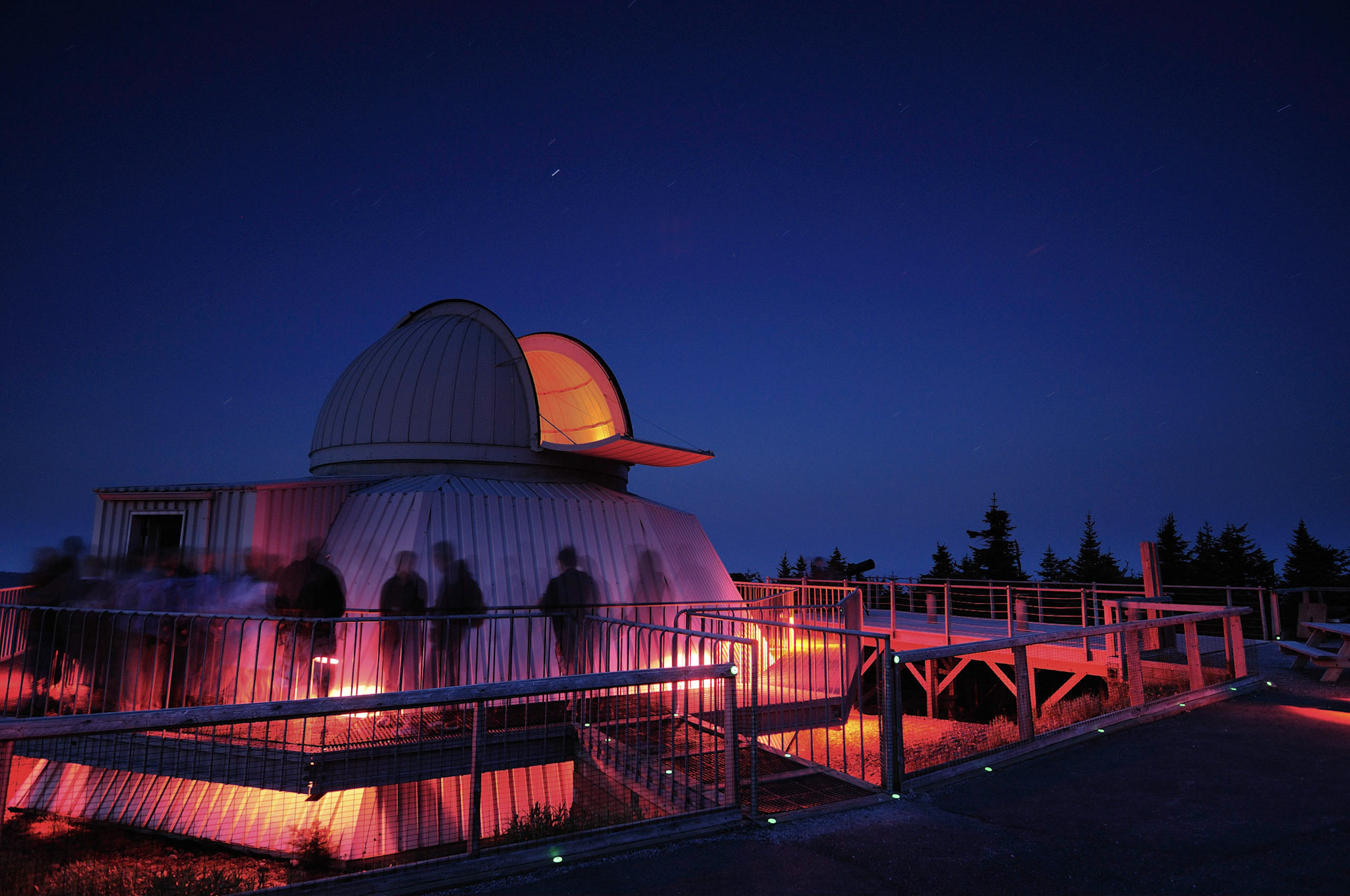
Rémi Boucher: From Earth to the stars on Mont-Mégantic
Rémi Boucher, a DarkSky Advocate in Canada, works to protect the night sky at Mont-Mégantic, the world's first International Dark Sky Reserve.

Each month DarkSky International features a DarkSky Advocate from the worldwide network of volunteers working to protect the night. This month we’re highlighting the work of Rémi Boucher in Canada.
Stand at the summit of Mont-Mégantic in southern Québec on a clear day and you can see as far as the borders of Vermont and Maine in the U.S. Stand here on a clear night and you can see all the way to the Andromeda Galaxy. A granite inselberg rising 1,110 meters (3,642 feet) in the Canadian Appalachian Mountains, Mont-Mégantic is crowned by an astronomical observatory, the Observatoire du Mont Mégantic. It is here, in the heart of the world’s first International Dark Sky Reserve (IDSR), that Rémi Boucher works many of his evenings.

If you spend any time in the dark-sky community, you will likely hear Rémi’s name. Whether presenting on the successes and challenges of running an IDSR, serving on DarkSky’s International Committee, designing the national standard against light pollution in Québec province, or contributing astrophotography to outlets like CNN, Rémi is a hive of information and passion for nocturnal conservation and dark skies. He has served as the Scientific Coordinator, Spokesman, and Webmaster — not to mention resident data geek — at Mont-Mégantic IDSR for the last decade.

As the first IDSR ever certified, Mont-Mégantic was foundational in creating guidelines for DarkSky reserves and has been a forerunner, and in some ways an experimental lab, for what a reserve can look like and achieve.
“A lot of the groundwork for what [defines] a dark-sky reserve came from our project,” says Rémi. “So the idea of having a buffer area and things like that came with what was done at Mont-Mégantic.”

In 2021, Mont-Mégantic and its hard-working team were recognized with the Dark Sky Place of the Year award for their commitment to education and outreach, and for achievements in spreading good lighting practices across the province of Québec.
I asked Rémi where his interest in dark skies came from and he said that, like many kids, he wanted to be an astronaut when he was young, but soon discovered the path to the job was incredibly difficult. He eventually decided on a degree in Molecular Biology. His love affair with Mont-Mégantic started in 2003 when he took a summer job at the ASTROLab, the park’s astronomy activity center. He spent several summers there leading stargazing and telescope observing activities and science education for visitors.

In talking to Rémi for even just a few minutes, his passion for Mont-Mégantic as both a natural landscape and a dark-sky reserve is obvious.
“The shape of Mont Megantic is quite singular,” he tells me. “You have this crown of mountains, almost circular, with a great, big view — basically 360 degrees. When you’re inside this crown of mountain, it can be so quiet. There’s just nothing else to hear except the creeks or the trees. It’s just a great place to look at nature, either up or down. The national park’s catchphrase has always been, “From the Earth to the stars.”
Although now focused almost entirely on running the reserve, Rémi says that public outreach and stargazing still keep him connected to his purpose as a dark-sky advocate and conservationist.

“That has always been very important for me to stay grounded — the education, the popularization of science. I want to make it simple enough so that everybody can understand,” he says.
One of the large projects Rémi and his team are currently working on is the monitoring of night-sky brightness from all of Québec’s National Parks. The aim is to follow the evolution of light pollution inside of these protected territories. The team has already started to install photometers (light meters) as part of the pilot phase and will monitor the trends over several years.
In parallel, Rémi is working to make light a recognized pollutant within the park organization and more broadly within conservation. “Things are going in the right direction and we have support from higher up in the organization. That’s why I wrote a ‘Lighting Guide for Québec’s National Parks’ last year and we are helping other parks in updating their outdoor lights and using better practices.”

When I asked Rémi about humanity’s physical connection to the natural world, he said that it is a critical aspect of protecting nature, and is what’s being lost as we light up the night. And he has felt this loss on a personal level.
“I remember, one time I had worked at the observatory for the whole night with people. I was the last one left and as I was going down the mountain, I could see rising in the east the Pleiades and zodiacal light, and I could see Orion peeking just above the mountain. And I was like, ‘Oh my god, the summer is ending.’ I had lived a lot of summers at Mont-Mégantic by then, but somehow that time, seeing Orion rising, I really felt the end of the summer, and I could literally see in the stars that winter was coming.

“I realized, wow, this is just how people lived before. That was their clock and their calendar was in the sky.”
Learn more about Mont-Mégantic International Dark Sky Reserve at cieletoilemontmegantic.org and follow Rémi on Twitter @remiboucher or check out his astrophotography at remiboucherphoto.com.
To join the DarkSky Advocate Network, go here.



















